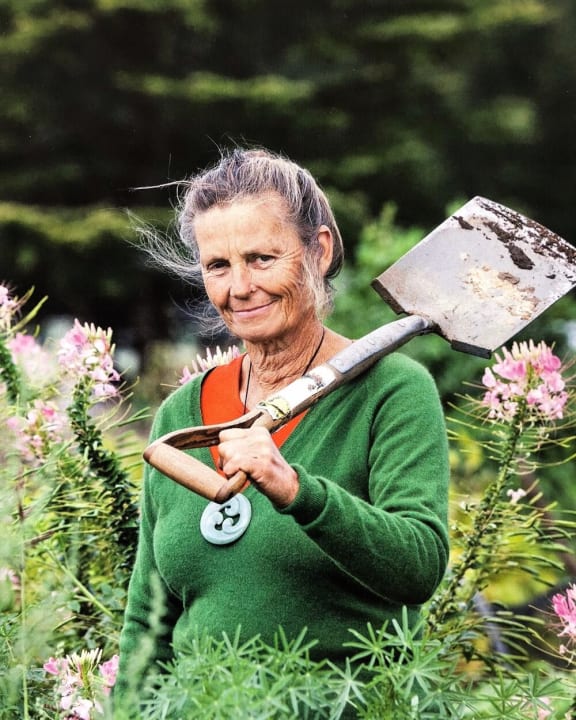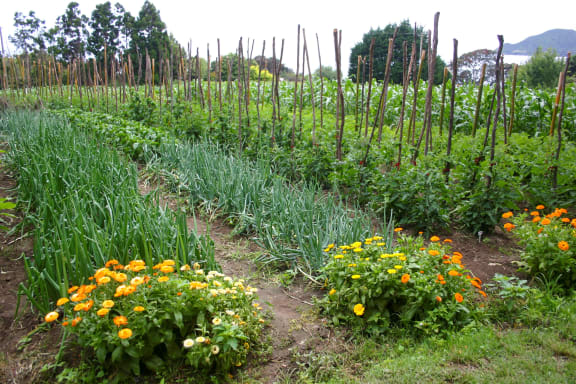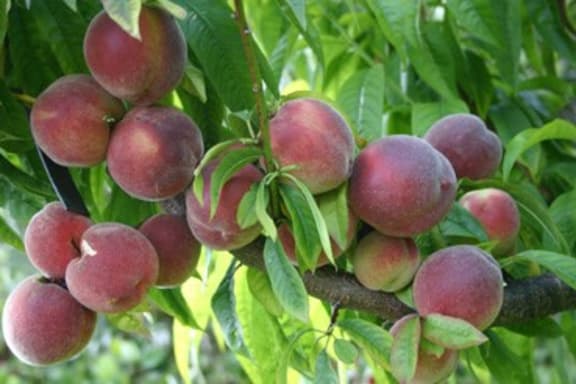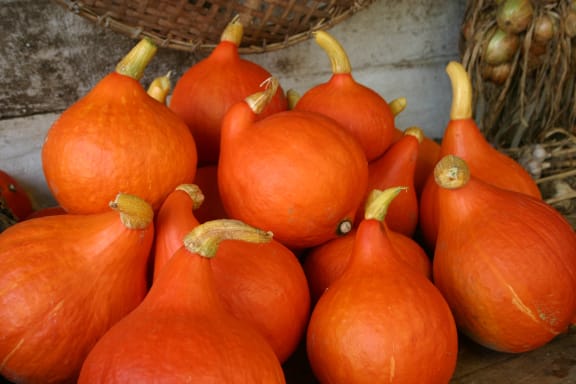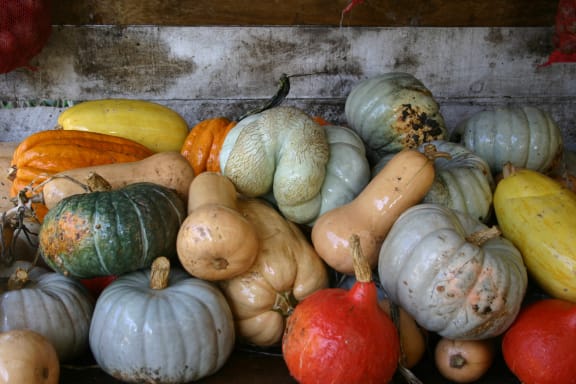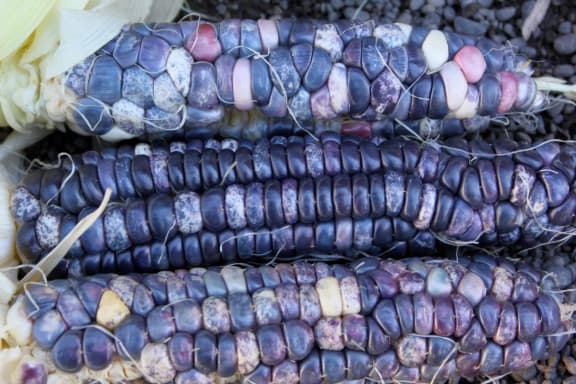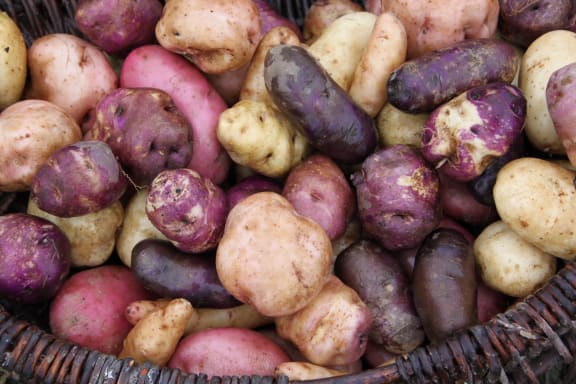Kaitiaki of plant collections, mentor and educator Kay Baxter is co-founder of the Kōanga Institute in the Hawkes Bay, home to New Zealand's largest heritage food plant collection.
Over the past 30 years the Koanga Institute has collected and saved over 700 heritage vegetable seed lines and over 300 northern heritage fruit tree lines.
Based at Kotare village north of Wairoa, it's 50 hectares of 100 percent organic, regenerative and NZ grown seeds, trees, perennials. Here you can join a workshop, go on a guided tour or become an apprentice.
Baxter tells Kathryn Ryan how she's been hooked on organic gardening for fifty years, during which time she's cultivated a vast knowledge of home gardening and growing nutrient-dense food production, and nurtured links between regenerative food growing and human health, and is now also offering online courses.
Her interest in heritage fruit trees goes back to an old peach tree in Kaiwaka, she says.
“We had a peach tree growing out from under the dog kennels on the farm, on the family farm, and it was self-sown, no one planted it. And every year it had this incredible crop of peaches and the kids would climb up on the dog kennel roof and gorge themselves and I’d bottle heaps, and there'd still be enough to have wars with. And they tasted amazing.”
That set her off on a journey, she says, after an old friend told her there were many old fruit trees around Kaipara Harbour.
“I collected loads of amazing trees and I didn't even really know what I was collecting because at that point, nearly 40 years ago, the possums were, probably still are, eating all the new growth and all the flowers and so we had to take scion wood and take them home and graft them and wait for the fruit.”
Gradually those trees began to bear fruit, she says.
“The fruit tasted incredible. I've never seen anything like the fruit before they cropped really well.”
These trees were remnants of the specimens that were brought to New Zealand by Pākehā, she says.
“When our Pākehā ancestors came here, they came from everywhere, from all around the world, and we stopped everywhere on the way and we bought this enormous collection of plant material to this land.
“And like everywhere else in the world, we planted it and whatever did best we saved and grew and passed to our neighbours and our families, and so we sort of ended up with fruit trees that were selected to do well.”
World War II and the search for export markets changed all that, she says.
“We ended up with a small range of crops that we exported, and they became, in terms of fruit trees, the fruit trees that we could buy in the garden centres or the places that sold fruit trees because we just kind of got what was left.
“And that became the fruit that we bought in the supermarkets, because we get pretty much what's left over from the export fruit.”
These older varieties are tasty and nutritious, she says. And the same goes for the heritage vegetables she started to collect 20 years’ ago.
Her interest in regenerative growing began when she realised that despite growing organically not all was well in her garden.
“I could see there were issues in the garden, even though it was organic, my compost, it was clear to me by observation, my compost wasn't actually growing my vegetables, there was something wrong and I didn't understand what it was.,” she says.
One day a visitor to the house gave her the book Nourishing Traditions by Sally Fallon. In it Fallon talks about the findings of nutritionist Weston Price who analysed indigenous diets.
“Weston Price have travelled around the world and the 1920s and 30s and he tested the food that every indigenous group of people that were still eating their traditional diets.
“He sent all the food back to America and got the nutrients tested, and what he discovered basically was that even in the 1920s their diets they had 10 times more fat-soluble vitamins then we had in the 1920s.”
Nutritious food starts with the soil, she learned.
“We've lost 95 percent of the minerals in our soil since then. And there’s a direct relationship between what's in the soil and what's in our food and the health of our bodies.”
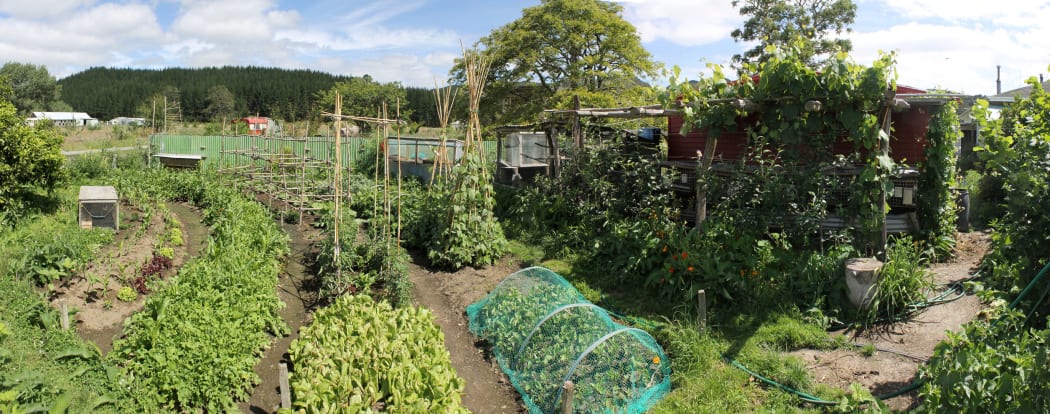
Kōanga's urban garden Photo: Kōanga
She has since been building up her soil using a bio-intensive method.
“Compost is essentially where most home gardeners build the humus which then goes back to the soil. So, we're using a gardening system called bio-intensive gardening, and in that system 50 percent of our garden area over the period of the whole year is growing crops to make compost with, but they can also be edible crops like corn, for instance, corn stalks are great for making compost with.
“We follow some principles of how to make a compost heap so that not only does it have high levels of humus in there, but it has all the minerals that are required by the plants to grow to be nutrient dense.”
It is important the compost heap is fed with all the nutrients it needs, she says.
“We burn bones and shells and that's our calcium that goes in there, and we put biochar in there and we put seaweed in there and in the winter we grow lupins and oats to put in the compost, we know that lupins and oats sequester phosphate.”
This has raised the humus levels in her soil significantly, she says. From four percent to 30 percent.
This kind of regenerative growing has wider implications, she says.
“You know, everything on the planet needs it - biodiversity is going down the tubes, human health is going down the tubes, the wilderness, everything, we're degenerating everything, we're very good at degenerating everything, we need to learn how to just turn the other way, look the other way and begin the regeneration process.”
